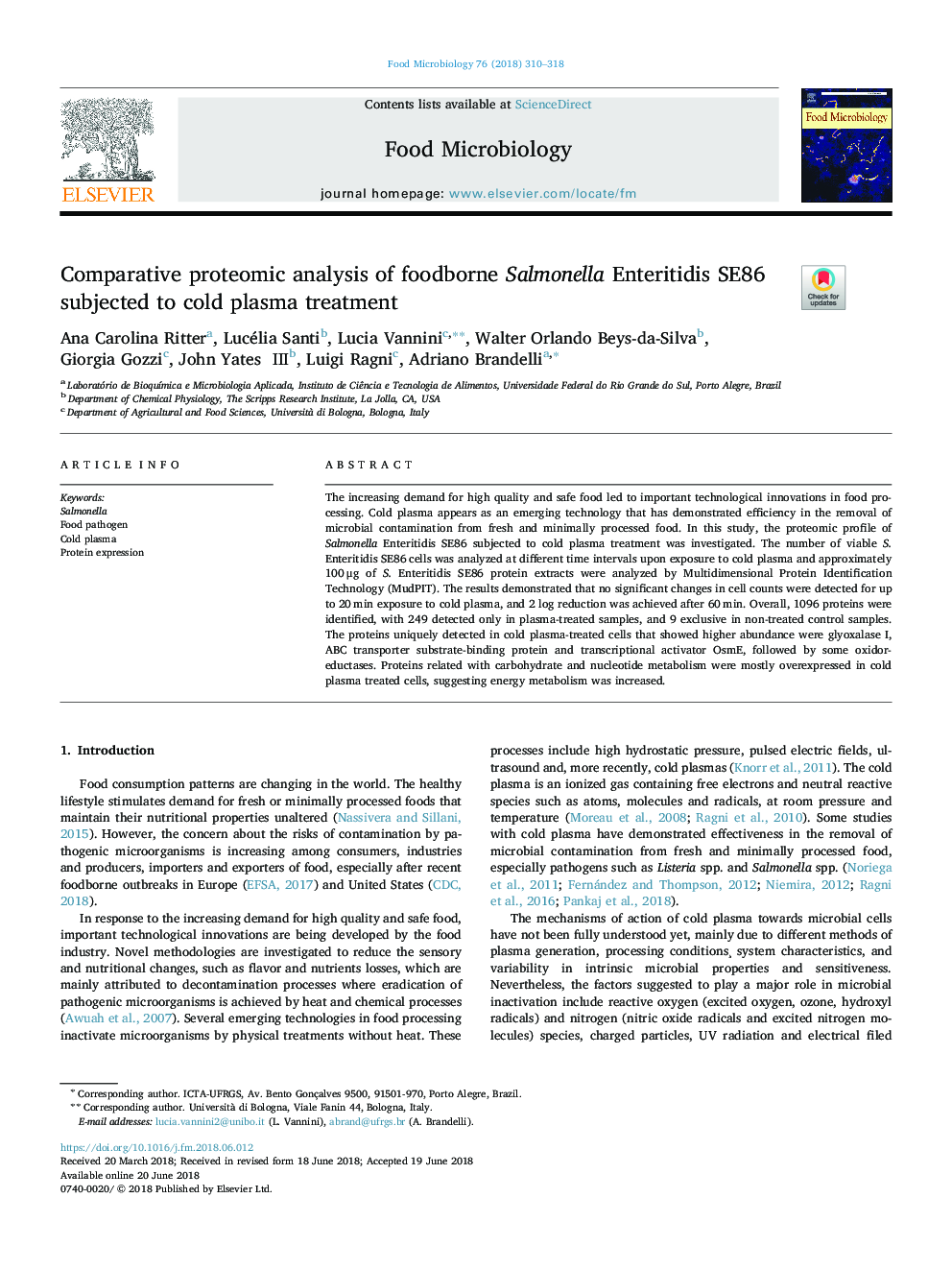| Article ID | Journal | Published Year | Pages | File Type |
|---|---|---|---|---|
| 8843445 | Food Microbiology | 2018 | 9 Pages |
Abstract
The increasing demand for high quality and safe food led to important technological innovations in food processing. Cold plasma appears as an emerging technology that has demonstrated efficiency in the removal of microbial contamination from fresh and minimally processed food. In this study, the proteomic profile of Salmonella Enteritidis SE86 subjected to cold plasma treatment was investigated. The number of viable S. Enteritidis SE86â¯cells was analyzed at different time intervals upon exposure to cold plasma and approximately 100â¯Î¼g of S. Enteritidis SE86 protein extracts were analyzed by Multidimensional Protein Identification Technology (MudPIT). The results demonstrated that no significant changes in cell counts were detected for up to 20â¯min exposure to cold plasma, and 2 log reduction was achieved after 60â¯min. Overall, 1096 proteins were identified, with 249 detected only in plasma-treated samples, and 9 exclusive in non-treated control samples. The proteins uniquely detected in cold plasma-treated cells that showed higher abundance were glyoxalase I, ABC transporter substrate-binding protein and transcriptional activator OsmE, followed by some oxidoreductases. Proteins related with carbohydrate and nucleotide metabolism were mostly overexpressed in cold plasma treated cells, suggesting energy metabolism was increased.
Related Topics
Life Sciences
Agricultural and Biological Sciences
Food Science
Authors
Ana Carolina Ritter, Lucélia Santi, Lucia Vannini, Walter Orlando Beys-da-Silva, Giorgia Gozzi, John III, Luigi Ragni, Adriano Brandelli,
